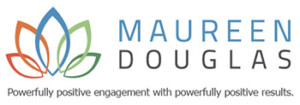In the days before mass media, social technologies, the Internet and Twitter, everyone in town would turn out for the town hall meeting. It wasn’t called “community engagement” or “public consultation”. It was called a town meeting. And folks showed up — to get the facts, to share their opinion and to be part of the decision-making process.
But in the age of digital media and 24/7 content overdrive, it’s not easy to break through the noise and grab someone’s attention. It’s even harder to secure a chunk of someone’s overtaxed time. But if done right, in-person public engagement can be a powerful and effective tool for increasing interest in local affairs and enhancing participation in community programs.
So how do we do it right? Engage and be engaging – in the true sense of the word. Here’s the definition from dictionary.com:
en·gage
1. to occupy the attention or efforts of (a person or persons):
2. to secure for aid, employment, use, etc.;
3. to attract and hold fast:
4. to attract or please:
Notice the words in bold: “occupy the attention”; “attract”; “please”. When’s the last time you went to a public engagement meeting and it held your attention and truly “engaged” you? When were you last attracted to a meeting out of interest rather than out of frustration? And there in lies the challenge.
Public engagement, particularly in the public meeting format, has a lot of competition for your time — work and family commitments, hobbies, social time, television, Internet, email, etc. Most public engagement ads and meeting notices look like legal announcements — all small print, unreadable maps and graphs and way too much text. Where’s the sizzle? Where’s the appealing reason for me to show up? And where’s the promise of time well spent? If I’m going to give two hours to a public meeting, I’d like to know what some of the benefits will be, or at minimum, I’d like to know that I’ll be engaged.
And why shouldn’t public engagement be fun? Depending on the subject matter, there’s no reason why public meetings can’t be light, positive and dynamic. More often than not, a strong and positive moderator can find a way to share a laugh with the audience. The moderator sets the tone from the get-go and has a responsibility to maintain a positive, respectful tone throughout the proceedings.
Wouldn’t it be radical if public engagement meetings dared to not just inform, but were designed to truly engage us, connect with us, even inspire us? When I plan and moderate public meetings, my goal is to have the attendees not just say, “I’m glad I went”, but also “It was interesting, informative and fun. It was a good use of my time.”
Public engagement meetings can even (gasp!) entertain. Given the competition for time, if we can be creative in our presentations, style, interaction and tone, then, yes, public engagement can move beyond engaging to entertaining. And with that goal in mind, we are on the path to once again filling town halls and meeting spaces with citizens who are interested and excited about the process.
Next week we’ll take a look at some of the basic requirements to hosting a successful public meeting. Because in creating a better big picture, the small things matter too.
~ Mo Douglas
Sign up for the weekly “Truth Tuesdays” blog or for a daily dose of truth, click here:

